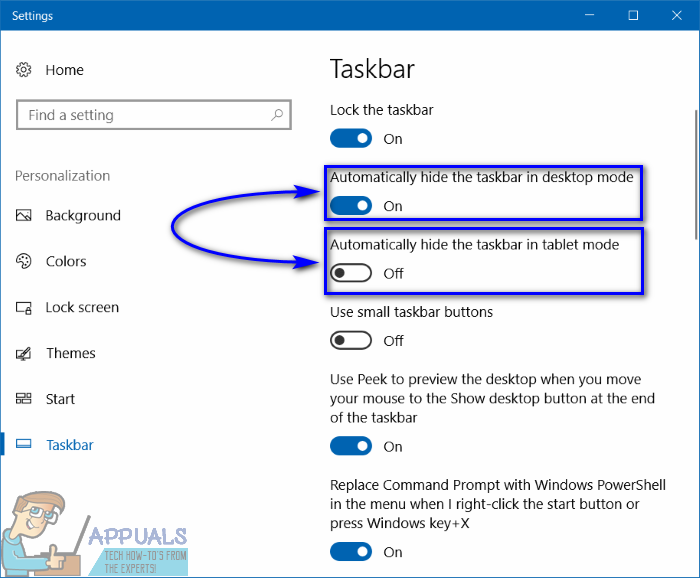Thankfully, Windows 10 users have the authority to free the screen real estate used up by the taskbar by simply hiding it. Not only is it entirely possible to hide the taskbar in Windows 10, you can configure the taskbar to either be hidden permanently or only be hidden while it is not in use.
How to auto-hide the taskbar
Auto-hiding the taskbar is a feature that has been around since the Windows XP days. When you configure the Windows taskbar to auto-hide, your computer hides the taskbar while it is not in use and it pops back up when you need it. That is, the taskbar stays hidden until you move your mouse pointer to the bottom of your screen (or if you’re using a touchscreen, swipe up from the bottom of your screen). Auto-hiding the taskbar might have been around for quite some time, but many Windows users still have no idea it exists. To auto-hide the taskbar in Windows 10, you need to: That’s it! As soon as you do so, you will see that your taskbar goes into hiding, freeing up a fair bit of screen real estate. Don’t worry, however – the taskbar will pop right back up whenever you move your mouse pointer to the bottom of your screen or swipe up from the bottom of your screen, and go into hiding again once you’re done with it. Sounds like the whack-a-mole games we all know so well, doesn’t it? It is worth noting that on Windows 10, auto-hiding the taskbar on a desktop computer is a tad different as opposed to auto-hiding the taskbar on a hybrid computer ( a computer that can be used both as a desktop and as a tablet). On a hybrid computer, you can choose if you want to auto-hide the taskbar while the tablet is in desktop mode, while the tablet is in tablet mode, or both. To auto-hide the taskbar on a hybrid Windows 10 computer, you need to:
How to permanently hide the taskbar (until you un-hide it)
Apart from using Windows 10’s auto-hide the taskbar feature, there are also other ways you can go about hiding the taskbar. Yes – ways, as in plural. There are a few different third-party programs and applications you can use to hide a Windows 10 computer’s taskbar until you yourself un-hide it. One of the absolute best tools for this job is Taskbar Hider – a program for Windows 10 that is designed to allow users to hide or show the taskbar on their computer using a dedicated keyboard shortcut. Taskbar Hider (available here) allows you to create a keyboard shortcut that you can use anywhere in Windows 10 to immediately hide your taskbar if it is showing, and show the taskbar if it is hiding. Taskbar Hider is quite the nifty tool for Windows 10 users who want to maximize the amount of screen real estate they have by hiding their taskbar. You should note, however, that you need to enable the Load at Windows Startup option in Taskbar Hider if you want to make sure that the program starts by itself whenever you log in to Windows and you don’t have to manually launch it every single time.
How to Hide Taskbar on Multiple Displays in Windows 10?FIX: Taskbar Refuses to Auto Hide In Windows 10How to Fix ‘Taskbar won’t Hide’ in Windows 7?Some Taskbar Icons Are Missing from Windows 11’s Taskbar? Here’s How to Fix It


